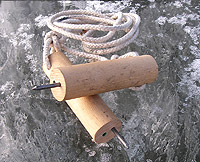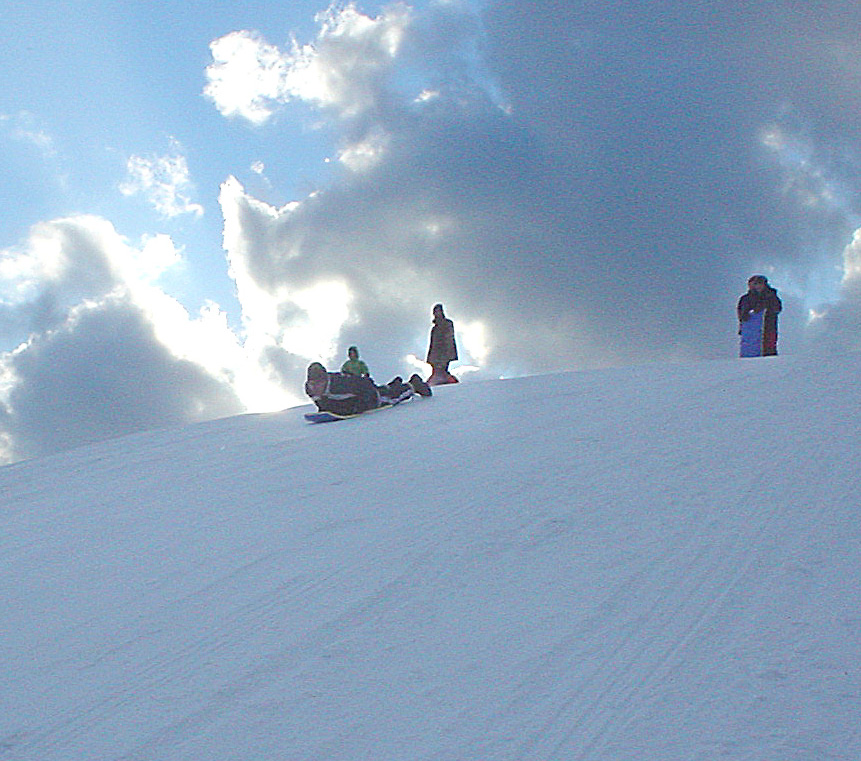The rule of thumb is do not walk on ice if it’s 3″ or less.
4″ of good, fresh ice is safe for one person.
When you go skating on wild ice, bring an ice spud or ax to test thickness before skating.
Now, according to Internet info, no ice is considered totally safe. It can vary a lot.
That’s why we always have a Safety Plan!
Falling through ice doesn’t have to be a big deal. Being immersed in water in the winter is no biggie, either. If you’re ready for it! It helps to be / have been part of the Yooper Sauna culture — where you take a sauna and jump thru a hole in the lake ice for a cool-down before going back in the sauna. Canoeing in the winter can teach you a lot: winter water is WARMER by far than winter air. It helps if you’ve done ice-fishing. But it helps MOST if you’ve ever been a muskrat or beaver trapper! –Their arms and legs are in and out of ice water each day and they break through ice as a matter of practice — swamping their hippers and waders and getting even wetter and colder than usual is more annoying than a shock. They can develop amazing adaptation, quickly rebounding from cold stresses (once thought to be impossible but proven by Russian military researchers).
Just be prepared and you’re fine if anything untoward happens. (And be in good health to start!)
Longtime wild ice skaters carry a long rope and ice-picks set up as a stick they wear on a string over their neck. (See more info at the Minnesota link below.) They often have a pole along as well.
It’s important to have dry clothes nearby — or to be aware of your drive-time to dry clothes.
These precautions are no big deal and are easy to do and to deal with.
Just do ’em!
And don’t panic if you ever do get wet!
Remember, good, fresh ice can be quite flexy. It can make booming/cracking sounds as weather changes or as it’s loaded for the first time in awhile.
If you do get into trouble, it likely won’t happen as a trap-door plunge. You’ll get wet feet and (fresh) thin ice will often sag before it gives — you may well get chances to get back to thicker ice. (Of course, exceptions apply.)
Consider the water depth of where you’re skating as well — our local swamps and even our local river are often only a feet or two deep where we skate, calming some wet-foot fears.
However, some of this has to be due to liability concerns because in Minnesota they put trailer homes on the ice, and ice-fishing resort cabins, and they even re-route vehicle traffic across lakes in some places for a detours that can greatly reduce a drive distance. ! ‘Course it’s probably all “at your own risk”…
Some links…
www.wikihow.com/Know-When-Ice-is-Safe
www.dnr.state.mn.us/safety/ice/index.html





